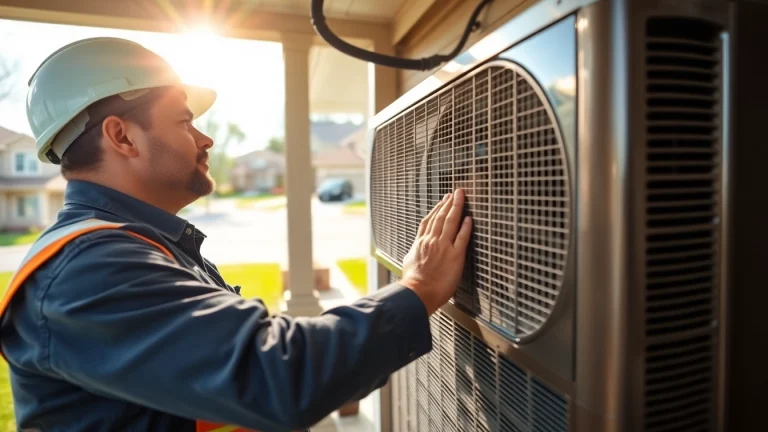
Mastering Solar Panel Installation: Essential Steps for Homeowners
The transition to renewable energy sources is gaining momentum, and one of the most viable options for homeowners is solar panel installation. With the increasing cost of traditional energy, coupled with the environmental concerns associated with fossil fuels, many are considering making the switch to solar energy. This comprehensive guide will explore all aspects of solar panel installation, from understanding the basics to the future of solar technology.
Understanding Solar Panel Installation
What is Solar Panel Installation?
Solar panel installation involves setting up solar photovoltaic (PV) systems that convert sunlight into electricity. These systems comprise solar panels, inverters, mounting systems, and battery storage or grid connections. Homeowners can either opt for grid-tied systems, which utilize the existing electricity grid, or off-grid systems, which are self-sustaining. The installation process usually requires professional expertise, covering everything from assessing the property to ensuring compliance with local building codes.
Benefits of Solar Panel Installation for Homeowners
The benefits of installing solar panels are vast and diverse, affecting homeowners on multiple levels:
- Cost Savings: Solar panels can significantly reduce monthly electricity bills, and many areas offer government incentives to minimize upfront costs.
- Increased Property Value: Homes equipped with solar panels have higher resale values, reflecting the long-term benefits of solar energy.
- Environmental Impact: Solar energy can reduce a household’s carbon footprint, contributing to a more sustainable future.
- Energy Independence: Solar installations allow homeowners to generate their own power, reducing reliance on the electrical grid.
- Low Maintenance: Solar systems require minimal maintenance beyond occasional cleaning, and many come with warranties lasting 20 to 25 years.
Choosing the Right Solar Panels for Your Home
Selecting the appropriate solar panels is crucial to maximize energy output and efficiency. Factors to consider include:
- Type of Panels: There are three major categories of solar panels (monocrystalline, polycrystalline, and thin-film) each with varying efficiency and cost.
- Efficiency Ratings: The efficiency level determines how much sunlight the panels convert into usable electricity.
- Warranty: Look for panels that come with substantial warranties indicating manufacturer confidence in their product.
- Cost: Balance between upfront costs and long-term savings; cheaper panels may have lower efficiency.
- Brand Reputation: Research manufacturers for their reliability, performance history, and customer reviews.
Pre-Installation Considerations
Assessing Your Home’s Suitability for Solar
Before installing solar panels, it’s essential to evaluate whether your home is suitable for solar energy. Consider the following:
- Roof Orientation: South-facing roofs typically receive the most sunlight; however, installations can still be effective on east or west-facing roofs.
- Roof Condition: Ensure that the roof is in good shape. If it needs repairs, it may be best to fix those issues before installation.
- Shade Analysis: Trees, buildings, or other obstructions that cast shadows on your roof can negatively impact solar efficiency.
- Available Space: Determine if you have enough space to accommodate the necessary number of solar panels.
Local Regulations and Permits for Solar Panel Installation
Different cities and states have varying regulations regarding solar panel installations. Before beginning the installation process, familiarize yourself with:
- Building Codes: Check local building codes that may require permits for solar installation.
- Homeowners Association (HOA) Rules: If you live in a community with an HOA, there may be specific guidelines regarding solar panel aesthetics.
- Incentives and Rebates: Explore available incentives from local or federal government programs that can lower your installation costs.
Financing Options Available for Solar Panel Installation
Financing solar panel installation can be overwhelming, but several options exist:
- Cash Purchase: Buying the solar system outright is the most straightforward option but requires significant upfront investment.
- Loans: Many banks and credit unions offer solar-specific loans, allowing homeowners to spread payments over time.
- Leases: Some companies allow homeowners to lease solar equipment with little to no upfront costs; however, monthly payments will apply.
- Power Purchase Agreements (PPAs): This arrangement allows homeowners to pay for the power generated by the solar system instead of the system itself.
The Solar Panel Installation Process
Step-by-Step Guide to Installing Solar Panels
Installing a solar panel system typically follows this structured process:
- Consultation: Schedule a consultation with a solar installation professional to assess your energy needs and discuss options.
- Site Assessment: An installer will evaluate your site to determine optimal panel placement and system size.
- Permitting: The installer will handle all necessary permits and approvals from local authorities.
- Installation: The installation team will mount the panels, connect the inverter, and ensure the entire system is wired properly.
- Inspection: After installation, local authorities will need to inspect the system to ensure it complies with regulations.
- Activation: The system is now operational, allowing for energy production and consumption monitoring.
Working with Certified Solar Installers
Choosing a certified solar installer is essential for ensuring a quality installation. Look for:
- Certifications: Check for certifications from recognized organizations (like NABCEP in the US).
- Experience: Research the installer’s experience, including the number of installations they have completed and their customer reviews.
- Insurance: Ensure that the installer is insured to protect you from potential liabilities during the installation.
Common Installation Challenges and Solutions
While installing solar panels can seem straightforward, several challenges might arise:
- Structural Issues: If your roof is not suitable, it may require reinforcement or a different installation strategy.
- Weather Delays: Adverse weather conditions can delay installation; planning for contingencies is crucial.
- Permit Denials: Ensure that all paperwork is accurate and complete to avoid delays from local authorities.
- Interconnection Issues: Collaborate with your utility provider early in the process to address any grid connection concerns.
Post-Installation: Maintenance and Monitoring
How to Maintain Your Solar Panel System
Proper maintenance is vital to maximize the efficiency and longevity of solar systems. Key maintenance tips include:
- Regular Cleaning: Dust and debris can accumulate on panels, reducing efficiency. Clean them with water and a soft brush as needed.
- Inspection: Periodically check for any visible damage or wear to parts of the system, including wiring or mounts.
- Professional Maintenance: Consider scheduling professional inspections annually to ensure everything is functioning optimally.
Monitoring Energy Production and Savings
Monitoring systems allow homeowners to track energy production and savings in real time. Key features to look for include:
- Inverter Display: Most inverters provide real-time statistics on energy production.
- Mobile Apps: Many systems now include smartphone apps for easy tracking of energy usage and performance metrics.
Understanding Warranty and Support for Solar Installations
Solid warranties are essential for peace of mind with solar installations. Key components of warranties include:
- Product Warranty: Covers defects in workmanship and materials, often lasting from 10 to 25 years.
- Performance Warranty: Guarantees a certain level of energy production over a specified period.
- Service Support: Ensure the installer or manufacturer offers reliable support for troubleshooting and repairs.
Future of Solar Panel Technology
Innovations in Solar Panel Installation Techniques
The solar industry is continually evolving, with innovations aimed at improving efficiency and reducing costs:
- Bifacial Panels: These panels capture sunlight on both sides, increasing energy yield.
- Building-Integrated Photovoltaics (BIPV): Advances in BIPV technology allow solar panels to be integrated into building materials, such as roofs and windows.
- Smart Solar: Incorporating technologies such as IoT and AI into solar installations can improve efficiency and monitoring capabilities.
The Growth of Solar Energy Adoption
As advancements make solar technology more accessible, adoption rates continue to rise. Factors contributing to this growth include:
- Government Incentives: Subsidies and tax credits help offset costs, making the initial investment more manageable.
- Increased Awareness: Education and outreach programs help inform potential users about the benefits of solar energy.
- Corporate Sustainability Initiatives: Many companies are investing in renewable energy to meet corporate social responsibility goals, spurring interest in solar solutions.
Environmental Impact of Solar Panel Systems
Solar energy offers significant environmental advantages:
- Reduction of Greenhouse Gases: Solar energy systems contribute to lower emissions compared to fossil fuels.
- Minimal Water Usage: Unlike traditional power plants, solar systems require little to no water for operation, conserving this critical resource.
- Reduction in Air Pollution: By decreasing reliance on coal and gas, solar panels help reduce harmful air pollutants.


